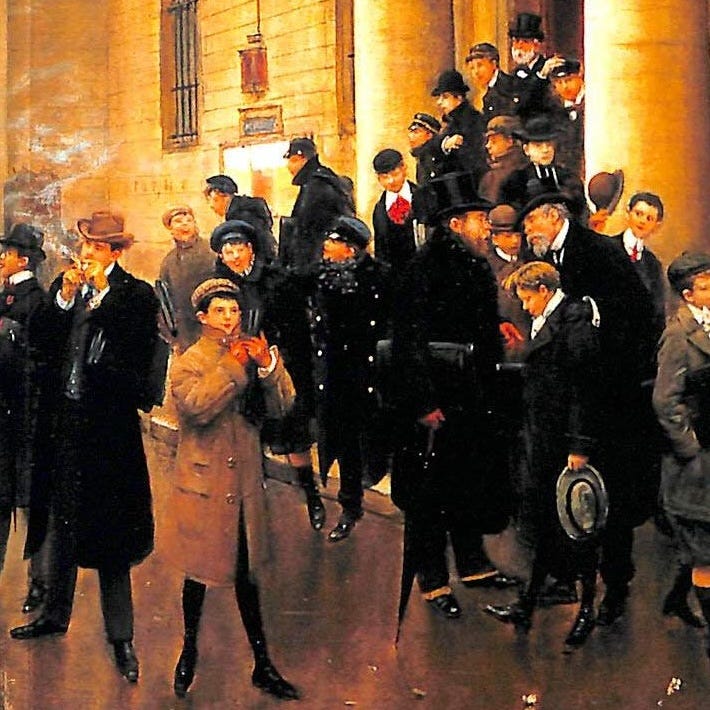I’ve really enjoyed our read-alongs so far this year – The Sorrows of Young Werther, The Haunting of Hill House and Under the Volcano. A week on Friday we’re going to start our Christmas book: The Thin Man by Dashiell Hammett. But today I’m writing to give you a sneak preview of the read-alongs I’ll be hosting in the first half of next year . . .
January 2025
Anna Karenina by Leo Tolstoy (1875-8)
To mark the 150th anniversary of the first published instalment of Anna Karenina, we will read perhaps the world’s greatest novel over the course of the whole of 2025 (and into 2026). We’ll read the original fourteen monthly segments and savour both the devastating love story and the panoramic depiction of nineteenth-century Russia.
How we’ll read it: over fourteen months, in the original monthly instalments, January 2025 - February 2026
My edition: Oxford World’s Classics | 896 pages | translated by Rosamund Bartlett
February 2025
Persuasion by Jane Austen (1817)
Next year marks Jane Austen’s 250th birthday. To celebrate the quarter millennial of world’s most beloved author, we’ll read her last, most mature and most romantic novel, Persuasion. It’s a story of second chances and late flowering love – perfect for Valentine’s Day.
How we’ll read it: over four weeks, February 2025
My edition: Penguin Classics | 288 pages | edited by Gillian Beer
March 2025
Gentlemen Prefer Blondes by Anita Loos (1925)
‘Kissing your hand may make you feel very very good but a diamond and safire bracelet lasts forever.’ One hundred years ago, in the March 1925 issue of Harper’s Bazaar, readers were first introduced to the unforgettable voice of Lorelei Lee, the ‘professional lady’ whose illuminating diary outlines her outrageous hunt for a millionaire husband. Edith Wharton called it ‘the great American novel’ and in 1953 Howard Hawks made it into a movie musical starring Marilyn Monroe.
How we’ll read it: over two weeks, March 2025
My edition: Liveright | 160 pages | introduced by Jenny McPhee
April 2025
The Old Curiosity Shop by Charles Dickens (1840-1)
This strange, dark, twisting novel contains some of Dickens’ most grotesque characters and exhilarating scenes. It began as a single strand among many in his weekly miscellany, Master Humphrey’s Clock, but soon took over that publication. I’m going to suggest we read the novel as its first readers experienced it, starting with the miscellany and then reading the original weekly instalments.
How we’ll read it: over ten months, in the original weekly instalments, April 2025 - February 2026
My edition: Penguin Classics | 608 pages | edited by Norman Page
May 2025
The Counterfeiters by André Gide (1925)
Nobel Laureate André Gide’s encyclopaedic examination of human weakness and despair was first serialised 100 years ago in the Nouvelle Revue Française. This was the only one of his works that he considered a roman – a novel. It was a favourite of Jorge Luis Borges and in 1999 it was chosen by Le Monde as one of the ‘100 books of the century’.
How we’ll read it: over six weeks, May - June 2025
My edition: Penguin Modern Classics | 352 pages | translated by Dorothy Bussy
June 2025
Mrs Dalloway by Virginia Woolf (1925)
Mrs Dalloway was first published 100 years ago in May 1925, by Leonard and Virginia Woolf’s Hogarth Press. Woolf’s modernist masterpiece is set over course of a single day: a Wednesday in ‘the middle of June’. To mark the centenary of this beautiful book, I suggest we read it in real-time over the course of one day, from 10am until nightfall.
How we’ll read it: over one day, Wednesday 18 June 2025 – save the date in your diary!
My edition: Vintage Classics | 208 pages
Buy a copy of any of these books through Bookshop.org (UK) or Bookshop.org (US) and Read the Classics will earn a commission from your purchase. Thank you in advance for your support!











Dear God! It's going to be a busy year (well, 14 months with Anna Karenina) as I've another slow read on the go, I hope.
'Persuasion' was a GCE text for me - and I can remember sod all about it. I think I probably focused on Hardy.
In May I’m seeing a musical in Cincinnati, Ohio, based on Mrs. Dalloway.